Frequently Asked Beekeeping Questions
Frequently Asked Beekeeping Questions
Before I start answering 21 common beekeeping questions, allow me to introduce myself. I am EAS Certified Master Beekeeper, David Burns. I have worked hard to educate and mentor beekeepers all around the country for over a decade. I do this through my ONLINE BEEKEEPING COURSES to help educate beekeepers to put an end to the unnecessary die outs of colonies around the US. Consider taking one of my courses. Let's face it, it's hard to know who is giving you sound beekeeping advice. The guy at the club? The fellow down the road? Are you sure they are giving you current and accurate information?
I OFFER THE FOLLOWING ONLINE COURSES: Basic Beekeeping, Spring Management, A Day In The Apiary, Queen Rearing, Advanced Beekeeping and Getting Your Bees Through The Winter. You can enjoy these courses from the comfort of your home, on your schedule without having to travel. You will be provided a worksheet and links to my teaching videos. I've worked really hard and long to provide these insightful courses. It's taken me well over a decade to gather up the videos and research so I know you will thorough enjoy these course. Thousands have enjoyed our online courses.
1. How Many Hives Should I Start With?
 How to start keeping bees can be confusing. The number of hives to start with is entirely up to the individual. We recommend at least two hives because with two hives you can share resources between hives. If one hive becomes queenless and fails to replace their queen, a frame of eggs can be carried over from the other hive and the queenless hive can raise their own queen. If one hive becomes low in numbers, frames of brood from the strong colony can be moved over to strengthen the weak hive. Certainly starting with one hive is acceptable, but there is an advantage to starting with more than one.
How to start keeping bees can be confusing. The number of hives to start with is entirely up to the individual. We recommend at least two hives because with two hives you can share resources between hives. If one hive becomes queenless and fails to replace their queen, a frame of eggs can be carried over from the other hive and the queenless hive can raise their own queen. If one hive becomes low in numbers, frames of brood from the strong colony can be moved over to strengthen the weak hive. Certainly starting with one hive is acceptable, but there is an advantage to starting with more than one.
4. How Close To The House Can I Put My Hives?
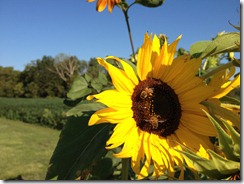 5. What Should I Plant To Help My Bees?
5. What Should I Plant To Help My Bees?
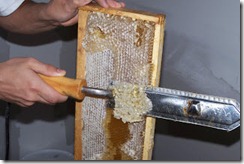 7. How Much Honey Will I Get My First Year?
7. How Much Honey Will I Get My First Year?
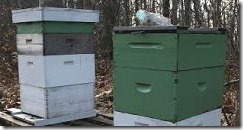 9. Can I Save Money By Using Old Equipment?
9. Can I Save Money By Using Old Equipment?
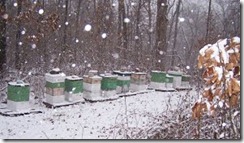 10. Should I Leave My Screen Bottom Board Open In The Winter?
10. Should I Leave My Screen Bottom Board Open In The Winter?
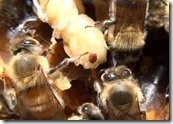 11. What Do You Recommend To Combat Varroa Mites?
11. What Do You Recommend To Combat Varroa Mites? Varroa destructor will be found in all beehives. We recommend these natural methods:
a. Screen bottom boards, so that mites fall out of the hive.
b. Green Drone Comb Trapping. Click Here to watch my video on how to use a green drone comb.
d. Removing the queen to break the mites brood cycle.
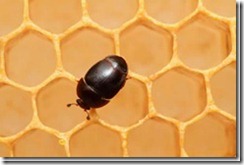 12. How Do I Treat Small Hive Beetle?
12. How Do I Treat Small Hive Beetle?
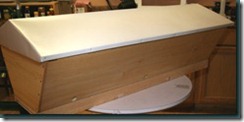 14. Should I Start With A Top Bar Hive Or Langstroth Hive?
14. Should I Start With A Top Bar Hive Or Langstroth Hive?
1. An entrance feeder is placed in the entranced of a hive in the spring. 1:1 Sugar/Water is used. This feeder cannot be used in the summer and certainly not in the fall or it may cause other hives to rob and kill a hive.
2. A top feeder is a large feeder placed on top of the hive and sugar water is held in a large reservoir. Sometimes stray bees can get under the top cover and drown in the reservoir, or the reservoir can crack and leak down into the hive and kill the colony.
3. Frame Feeders are used inside the hive in place of a frame. It's a frame sized plastic reservoir and requires opening up the hive to refill. It cannot be used in the winter because you cannot open the hive to refill it if the temperature is below 60 (F). It is labor intense
4. Check out our Burns Bees Feeding System which is a very effective way to feed bees in the spring and fall. For winter feeding we recommend the Winter-Bee-Kind feeding system.
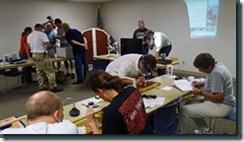 The more you know the better beekeeper you will be. We have a host of classes available all year. Taking a beekeeping class is so important for today's beekeeper. There have been lots of changes since grandpa kept bees. Without knowing how to keep bees today, you might lose your new hive quickly or the first winter. We are here to help. Our beekeeping classes are taught by Certified Master Beekeeper, David Burns. Be well informed before you start keeping bees by enrolling in one of our beekeeping classes. We offer ONLINE CLASSES, so you can watch our video classes from the comfort of your home.
The more you know the better beekeeper you will be. We have a host of classes available all year. Taking a beekeeping class is so important for today's beekeeper. There have been lots of changes since grandpa kept bees. Without knowing how to keep bees today, you might lose your new hive quickly or the first winter. We are here to help. Our beekeeping classes are taught by Certified Master Beekeeper, David Burns. Be well informed before you start keeping bees by enrolling in one of our beekeeping classes. We offer ONLINE CLASSES, so you can watch our video classes from the comfort of your home. 18. What Happens To Bees During The Winter?
During the winter bees do not hibernate. Instead, they cluster tightly together in their hive and generate heat to keep each other warm. They eat honey and pollen that they collected during the spring and summer. Many beekeepers make the mistake of hoping their bees have the stored honey they need to stay warm in the winter. However, science has shown us that bees need protein (pollen) too. Bees eat what we eat, carbohydrates and protein. We have a new approach to feeding bees by adding pollen into our winter-bee-kinds in the winter, and into our sugar water in the spring and fall. It is so important because without this needed protein, the colony is unable to raise young bees properly. David's "Getting Your Bees Through The Winter" class is available online. Click here.
19. How Much Time And Commitment Is Required To Keep Bees?
Once your new hive is established, we recommend that you inspect your hive every two or three weeks to ensure that your queen is healthy and laying well. Many new beekeepers find beekeeping so fun that they will open up their hive several times a week. This is fine but really not necessary.
20. Where can I go for help once I get started?
Over the last few years, many beekeeping places have popped up everywhere. People have purchased from many of these places only to find they cannot get any help or sound advice after their purchase is made. David offers a mentorship/coaching program and would love to become your mentor. Check out our mentorship program which gives you access to EAS Certified Master Beekeeper David Burns.
21. How Do I Manage My Bees In The Spring
|
|
If your bees survive the winter and are strong, they will swarm which means half of your population of bees will leave with your original queen. The remaining bees left behind will raise a new queen from an egg laid by the old queen. This will greatly reduce your population and will affect your colony's ability to make honey and thrive. It is best to control swarming by making splits prior to swarm season. Check out our ONLINE SPRING MANAGEMENT COURSE
What's Covered In This Spring Management Course
-How soon to inspect after winter?
-Feeding solutions in the spring
-How to make a walk away split
-David's best spring split method
-How to make splits without buying queens
-Swarm prevention techniques
-Split for more hives vs. not splitting for more honey
-Be aware of diseases more common in the spring
-Techniques to equalize hives in the spring
-Replenishing the bee yard with more packages vs nucs?
-How to collect pollen in the spring
-Is it okay to reuse old comb from a hive that perished?
-Tips on Finding Your Queen
-How to Install a new package of bees
-How to inspect your spring hive.
-Seasonal management calendar
-Feeding Solutions for each season
See what awaits you as you become a beekeeper.
